Playback speed
×
Share post
Share post at current time
Share from 0:00
0:00
/
0:00
Transcript
Lesson 06
Case Study 02: Salsify (sal-sea-fee)
Apr 13, 2025
If you’re tired and bored of the same vegetables available your are not alone, I’m right here with you. I researched why this is… turns out of the three hundred thousand species of edible plants available supermarkets only sell forty of them. These vegetable and fruits are cultivated to grow anywhere and to withstand differeant temperate climates and travel, within the over produced variety and the exhausted soil its grown in those thirty vegetables and fruits have no depth of flavor and often texturally off or dry. Take for example the trending pink pineapple, a gmo derived fruit, the very thing I love about pineapple is missing. That delicious perfectly balance sweet to tart balance and the juiciness is missing, its so overtly sweet, no dimension of flavor, the sadness. So much needs to be done to coerce them into having the taste experience we yearn for. A squash in the winter from ShopRite needs you to first start with a drizzle of honey but not too much or it will be too sweet, good salt, a crunchy one so you get some contrast, a spot of chili, not so much as to make it spicy hot but so that those receptors on our palates that get cheated when the subpar vegetable’s flavor flatlines they too get to experience a little love, in turn then wake up, you’ll need a slow and long roast to caramelize the notes but not too long or you risk dryness, you’ll need to cut it lengthwise when roasting, cut side but down but do not remove the seeds, otherwise you’ll have a dry out your squash
Yes, a lot of knowledge is needed and a lot has to be done to cook it nice, and then you realize flavor equals nutrition in most cases so we feel extra cheated. Enter cared for vegetables at the market of through small farms that care, they needs nothing and when vegetables are nurtured they have mega nutrition, period, and exclamation point.
Cue in salsify. An ugly and old looking root variety so special, so delicate in flavor that its often called the oyster vegetable. Its flavor profile is subtle, finessed and rounded, with a hint of sweet and salty like the sea, and its texture is soft but with structure. It also has a surprisingly long shelf life, similar to a potato, living out of the refrigerator and on your counter for up to one month.
I came across it years ago when working in fine dining and recently came across it again from my favorite farmer, Farmer Lee Jones ran a spotlight on them, he mentioned at one time it was Americas favorite hip vegetable, more popular than potatoes. This and all vegetables from his farm, Chefs Garden need nothing, they are cared for and deep in flavor. I immediately got my hand on some and found out that steamed is my favorite way of consuming them which is true with most high quality vegetable. Its also a way of calibrating my palate. Often times we want big flavor, acidity on high, all the crunch and heat, a full explosion of taste but every once in a while its important to have our palate work a little to find and note those soft delicate flavors, it’s a palate exercise. You can only do it obviously when you start with flavorful vegetables.
The first time I had them solo, topped with my favorite sesame oil made with black sesame, it’s so clean, and enhances any delicate flavored food unlike the strong toasted sesame oil varieties we often come across, they too have their place.
Another way to prepare them is to serve them cut in coins after they have been steamed or boiled and serve them with gigante beans, you can finish them with crunchy salt, fresh basil leaves and a high quality finishing olive oil. Or top it with Toasted Cacao Nib, Buckwheat, and Sesame Mix from p. 108, if you haven’t had or made it yet this finishing seed mix is super food, high source antioxidants, and minerals like magnesium and iron, aids in digestion, boosting mood, and supporting overall well-being.
In these last days of chill consider a Oden stew using Toasted Barley-Seaweed–Bonito Dashi.
ODEN STEW
1. In a large pot, combine 6 cups of dashi, soy sauce, mirin, salt, and sake.
2. Heat over medium-low until warm but not boiling.
3. Taste and adjust salt or soy sauce if needed.
Now, your oden broth is ready! Add ingredients like salsify, *daikon, eggs, tofu, and simmer gently to absorb the broth’s flavor. Traditionally, it’s simmered for at least 1–2 hours for the best taste.
*DAIKON has a traditional techinque that helps with potential bitterness.
Steps:
1. Peel the daikon to remove the fibrous outer layer.
2. Cut into thick rounds.
3. Lightly score an “X” on thick rounds to help flavor penetrate.
4. Pre-boil in rice water (the milky water after rinsing rice) for 10–15 minutes to remove bitterness. If rice water is unavailable, use plain water. I recommend making rice to accompany the oden stew.
5. Drain and rinse, then simmer in dashi-based broth for 30–60 minutes until translucent and tender.
Listen on
Substack App
RSS Feed

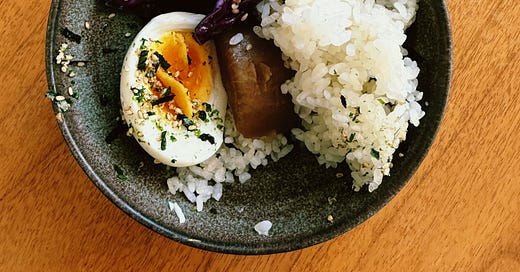



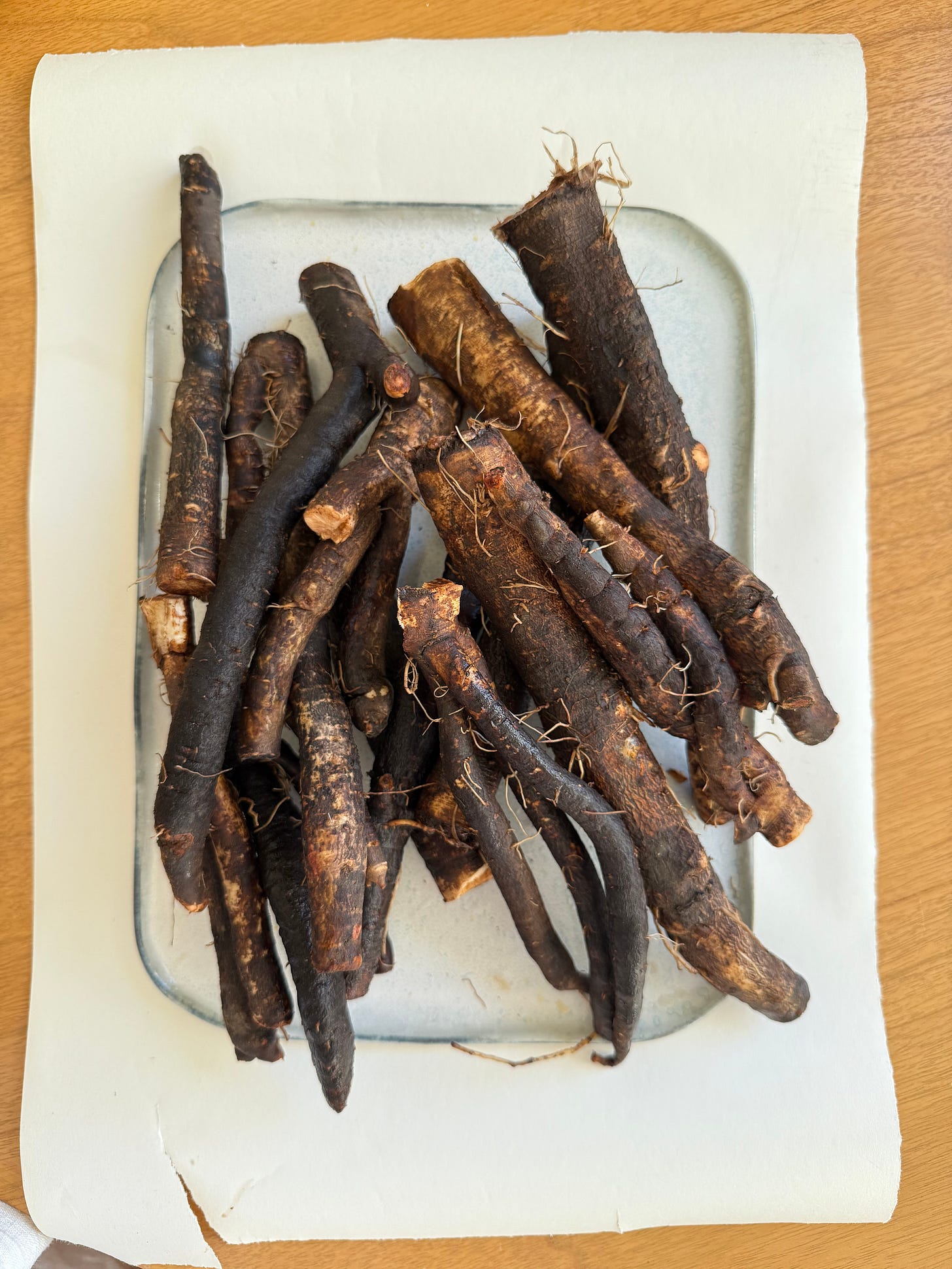

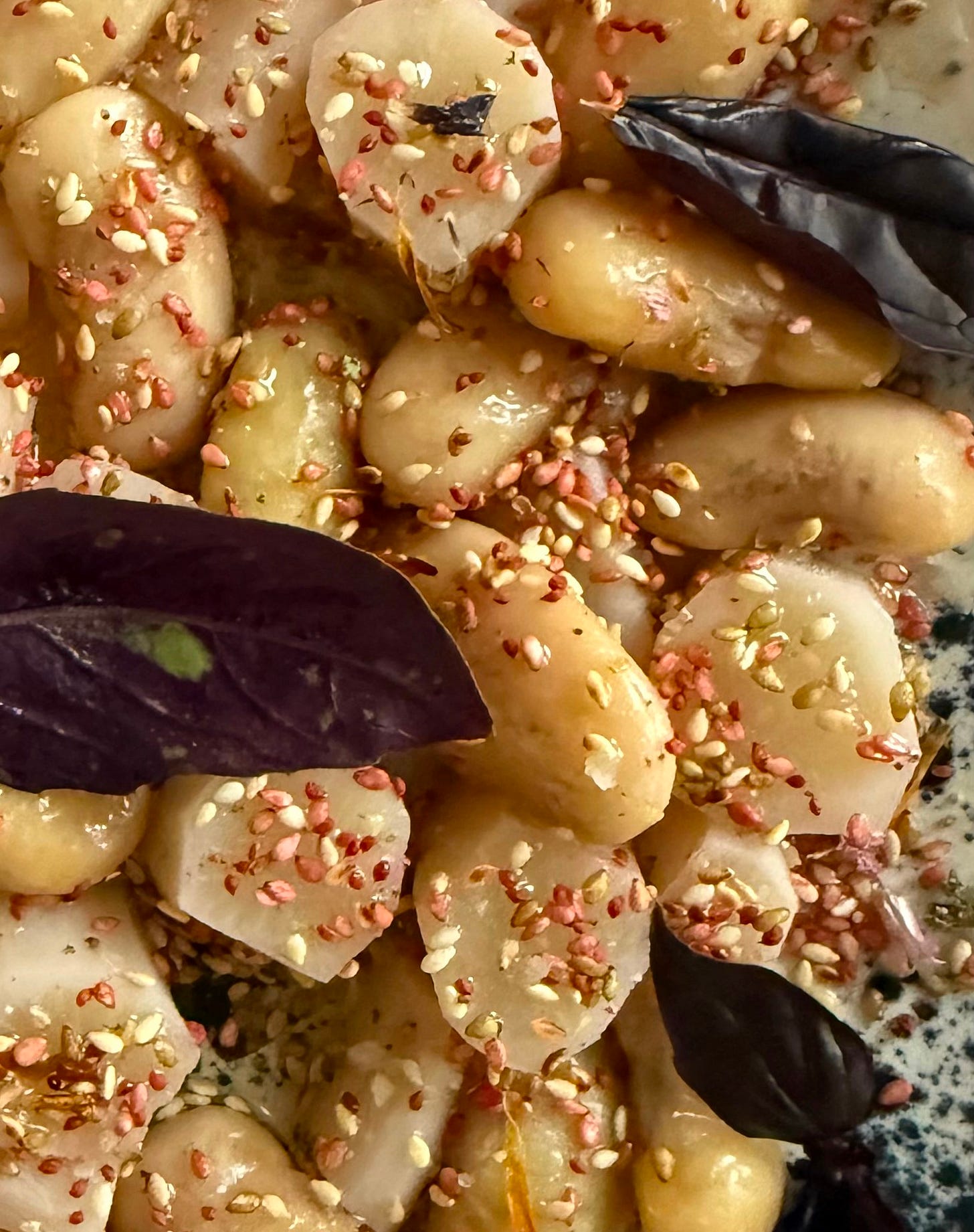
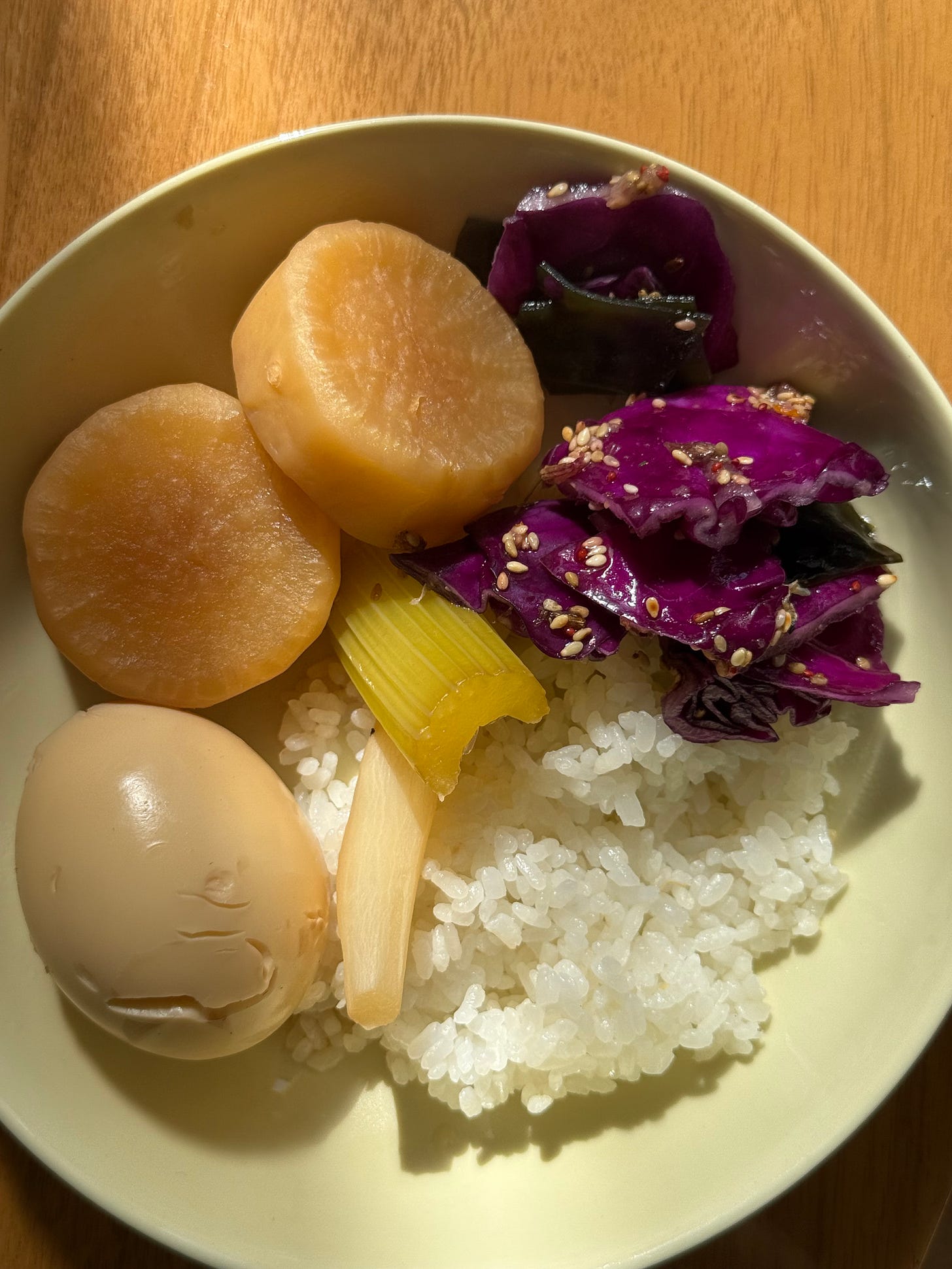
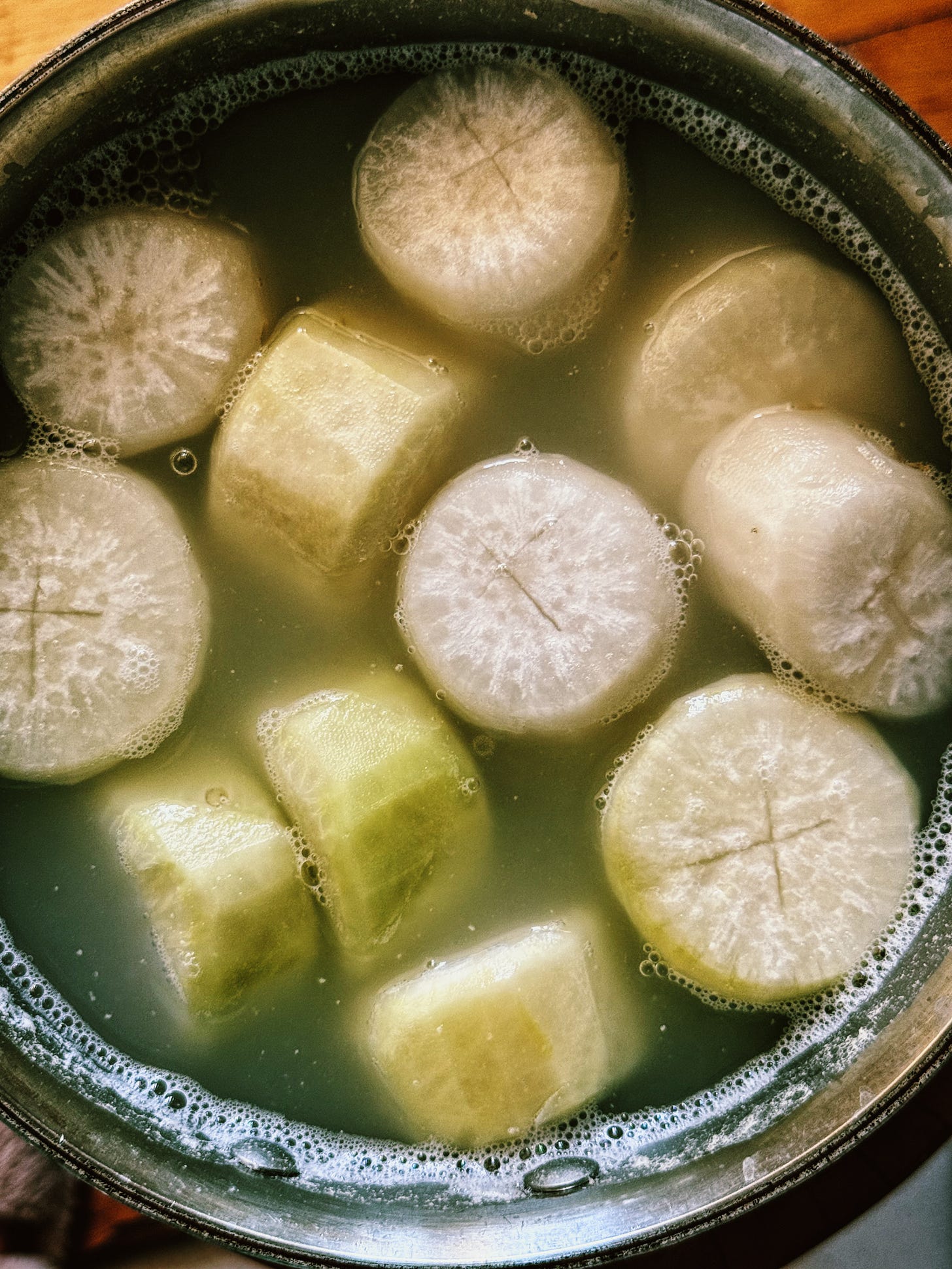









Share this post